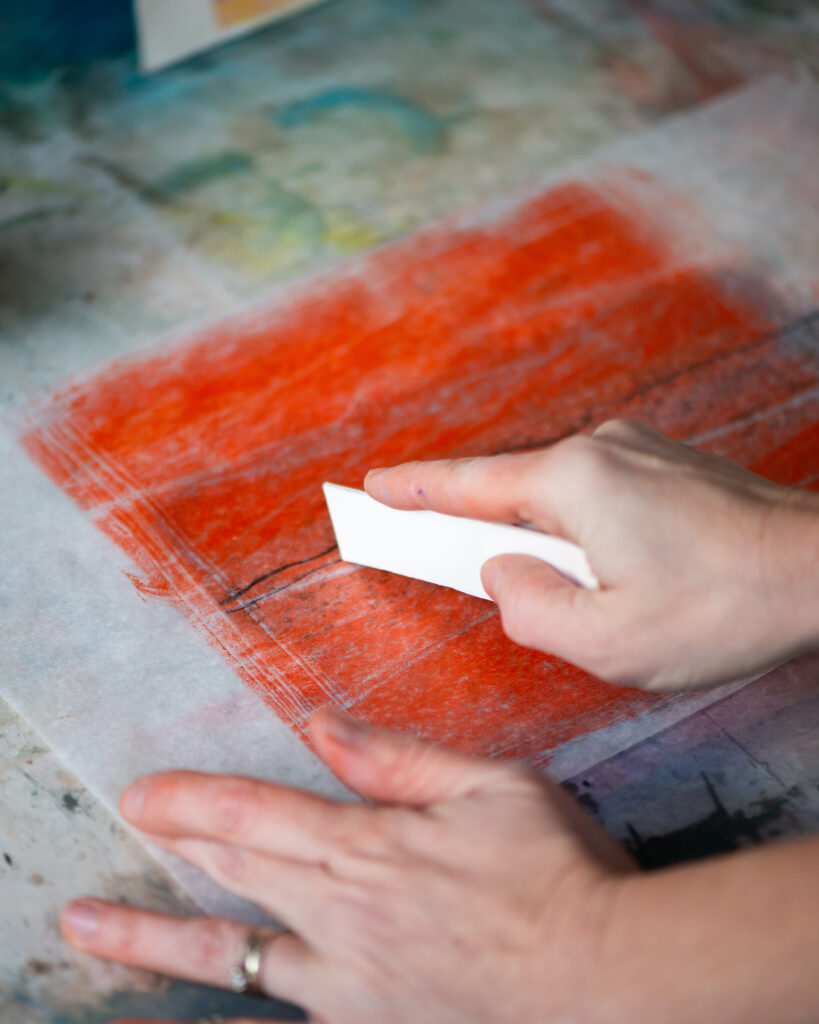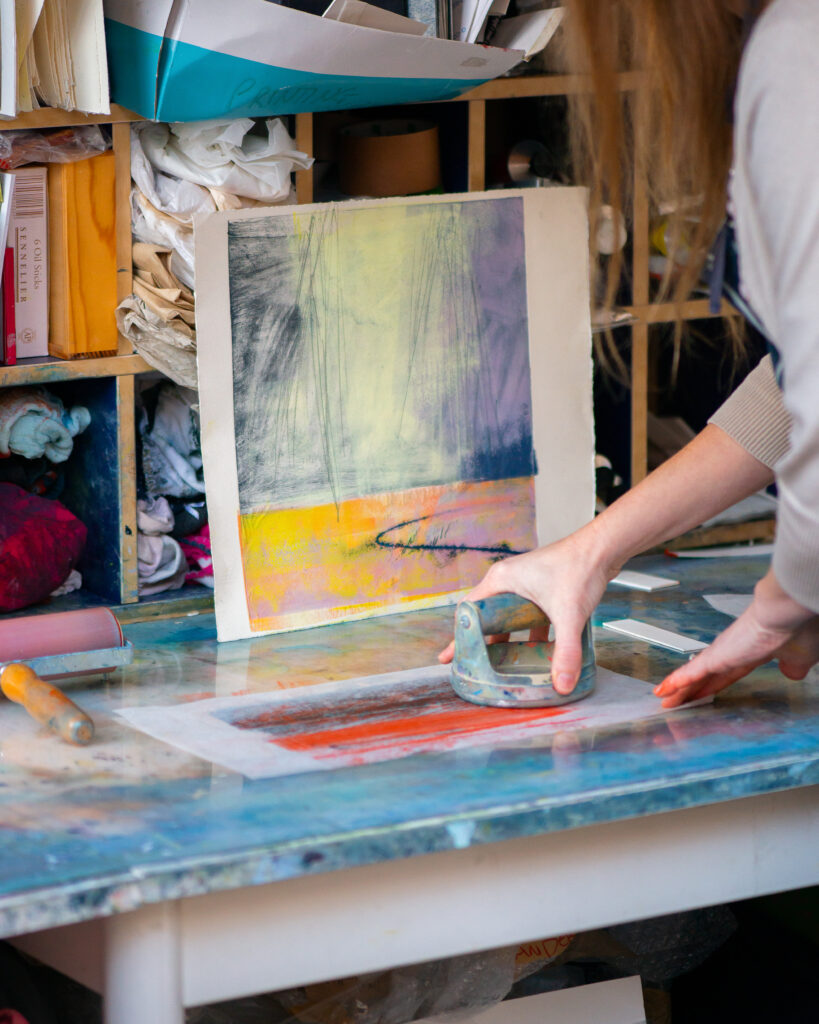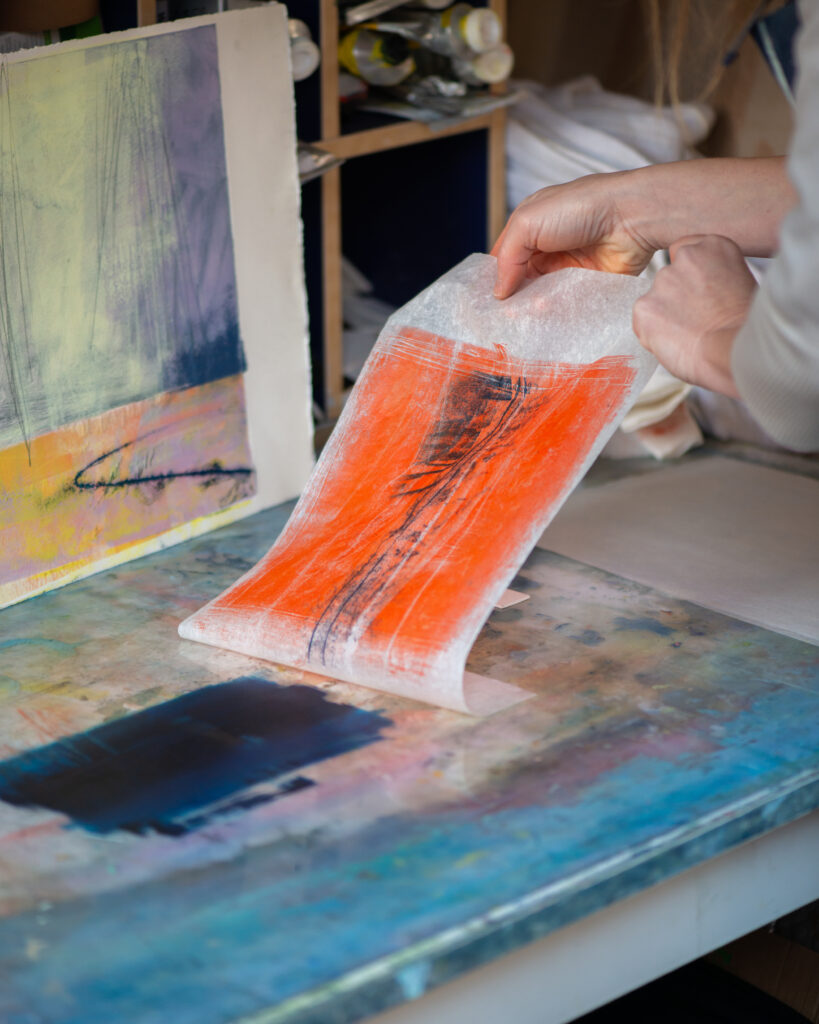Mono-printing is to make an impression on paper, the process only allowing one print to be made.
There are many different techniques that can be described as mono-prints, from potato printing to screen-printing, the word does not describe the process but rather the amount of impressions that can be made. The print can be made with a press or without, with traditional printing inks or water-colours (as in Japanese wood block printing) and using a printing plate or not. It often allows unparalleled freedom and experimentation and can be mistaken for painting.
You can see how I work at my You Tube channel ‘Printing at Home with Ruth Ander’. You can also purchase self-paced video courses to guide you through hand printing at home from this website.
Keep an eye out for my live online courses here.
I have developed my particular technique over several years, as a result of wanting freedom from a having to use a press and specific processes. It involves rolling oil paint onto perspex or glass, manipulating it, then placing paper over the top and applying pressure by hand, before peeling the paper way revealing the image. I will do this several times to create the level of colour and depth I require, and I constantly revise what I want from a picture as it evolves.
The types of paper I use have a massive effect on the print, creating different textures, iridescence and translucency.
Below are some photographs of me at work that illustrate my monoprint technique. This process will be repeated for each colour applied.


